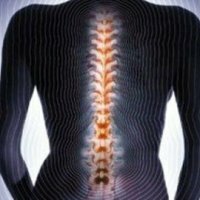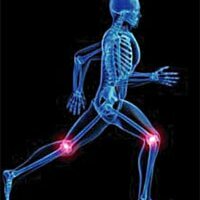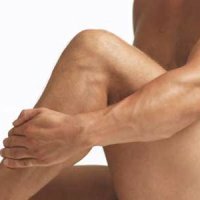Hygroma: symptoms, treatment, operation
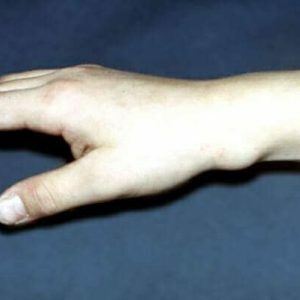 Hygroma is a benign ( tumor) originating from the synovial bag of the joint or tendon sheath.The fluid in the gigroma is synovial, that is, the one that bathes the articular surfaces.In this case, the hygroma always has a connection with the articular cavity.
Hygroma is a benign ( tumor) originating from the synovial bag of the joint or tendon sheath.The fluid in the gigroma is synovial, that is, the one that bathes the articular surfaces.In this case, the hygroma always has a connection with the articular cavity.
This tumor does not pose any health hazards, as it never degenerates into a malignant tumor.The main problem faced by patients is a cosmetic defect and a violation of the mobility of the joint, from the synovial bag of which a tumor was formed.
Hygroma often occurs on the limbs - in the field of wrist and ankle joints, can also form on the palms and fingers.
Contents: Causes of hygroma development Symptoms of hygroma Diagnosis Treatment of hygromaCauses of hygroma development

The causes of the development of the disease are not fully understood. However, it is believed that the main factors that cause the deformation of the synovial bag with the formation of the hygroma are the load on the joints and injuries. For example, hygromes on the wrists quite often occur in people who work hard with their hands.
Previous to the formation of the hygroma bursitis( inflammation of the joint bag) and tendovaginitis ( inflammation of the mucosal surface of the fibrous vagina through which the tendons pass).These diseases usually occur subacute with periodic exacerbation of inflammatory processes and soreness after excessive exercise.
Also, doctors advance the theory that heredity plays a certain role in the development of hygroma.
Symptoms of hygroma
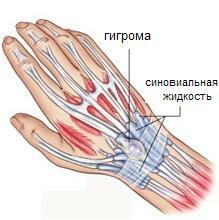 Visually, the hygroma looks like a small cone protruding above the surface of the limb.The skin above it is unchanged.The hygroma feels soft to the touch, you can even feel how the liquid flows in it, but over time the tumor acquires a more dense consistency.
Visually, the hygroma looks like a small cone protruding above the surface of the limb.The skin above it is unchanged.The hygroma feels soft to the touch, you can even feel how the liquid flows in it, but over time the tumor acquires a more dense consistency.
In general, the size of the formation under consideration is very variable: it usually starts with a bulge that resembles a pea, with time the tumor increases.In case of localization of the hygroma in the area of the wrist for better visualization, you can lower the brush down.
Hygroma, as a rule, does not hurt, and except for a cosmetic defect it does not bring any inconvenience to the patient. However, with the inflammation of serous fluid contained in the tumor, there may be a strong pulsating pain, swelling and limited movements in the joint with which the hygroma is associated.
Fluid from the hygroma can return back to the joint.In such cases, patients mistakenly believe that education has resolved.In fact, it almost always recurs.
Please note! During physical exertion the hygroma can temporarily increase in size.With a strong growth of the tumor, it is squashed vessels and nerves, so patients begin to feel limb numbness, a feeling of crawling and other symptoms associated with impaired blood supply and innervation of soft tissues.
Diagnostics
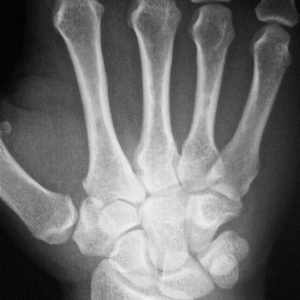 The surgeon can diagnose a "hygroma" in a normal patient examination.However, to clarify the diagnosis and exclude other pathologies( often they are much more serious than hygromas) may require a more extensive examination of , including:
The surgeon can diagnose a "hygroma" in a normal patient examination.However, to clarify the diagnosis and exclude other pathologies( often they are much more serious than hygromas) may require a more extensive examination of , including:
- radiograph of the affected area;
- ultrasound examination;
- according to indications - biopsy of education and computed tomography.
Treatment of hygroma
Conservative methods to cure hygromic is impossible .With the help of medicines and physiotherapy, one can only reduce the manifestations of the disease( for example, if the formation has inflamed).Puncture, crushing, tight bandaging and other similar methods of treatment give only a temporary result.Over time, the hygroma appears again and often not alone.Herbal lotions, ointments and other folk remedies are also ineffective.
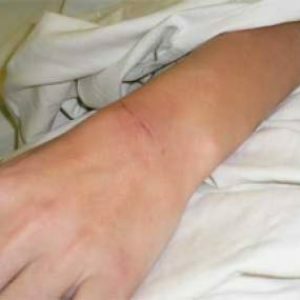 The only really effective method of treating hygroma is operative. Education should be removed radically, after sowing the synovial capsule.This is the only way to prevent a relapse of the ailment.Partial circumcision of the head of the hygroma leads to the fact that after scarring of tissues the serous fluid re-enters the newly formed cavity and everything repeats.
The only really effective method of treating hygroma is operative. Education should be removed radically, after sowing the synovial capsule.This is the only way to prevent a relapse of the ailment.Partial circumcision of the head of the hygroma leads to the fact that after scarring of tissues the serous fluid re-enters the newly formed cavity and everything repeats.
Surgery to remove hygroma is usually performed under local anesthesia.If there are several tumors and there are important anatomical structures near them, the intervention is performed under general anesthesia.
Hygromes that do not increase in size and do not bring discomfort to the patient, can not be removed.In such situations, the operation is exclusively cosmetic in nature and is carried out at the request of the patient.Well, absolute indications for the removal of hygromas are:
- compression by a tumor of nerves or vessels;
- dysfunction of the joint, near which the hygroma is located;
- inflammation of the hygroma.
After surgery, the patient should spare his hand.For this purpose, a special fixative bandage( longettes) is prescribed.In the future, when carrying out any work with his hand on his wrist, it is also desirable to put on a fixing elastic bracelet.
An important stage of postoperative recovery in gigroma is therapeutic gymnastics.It does not allow spikes to form and promotes the resumption of normal mobility of the joint.
Zubkova Olga Sergeevna, medical reviewer, epidemiologist-doctor

